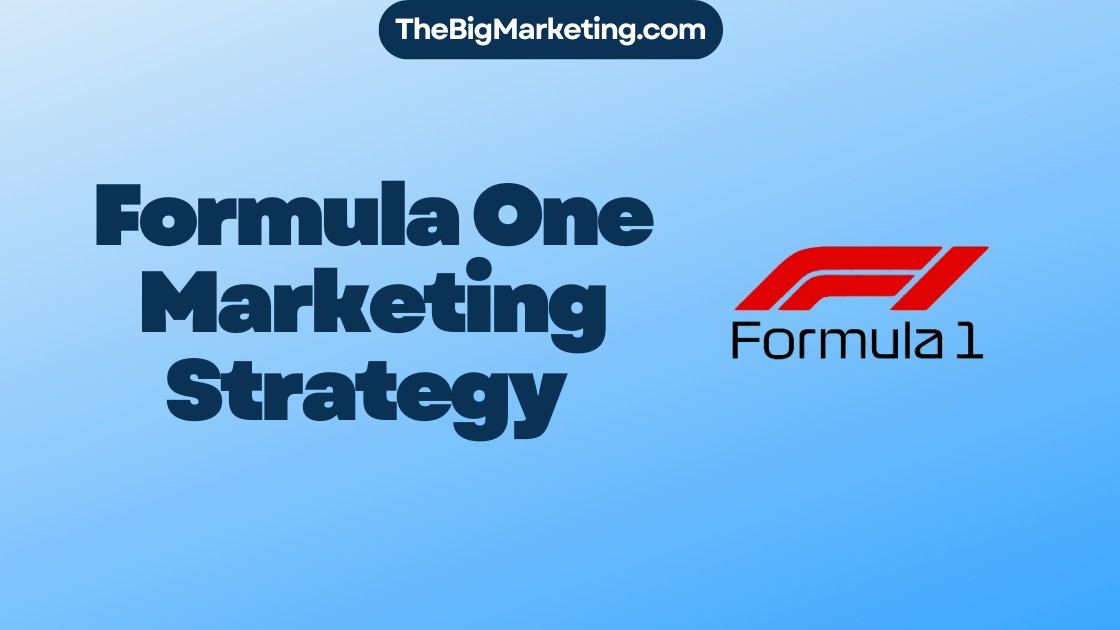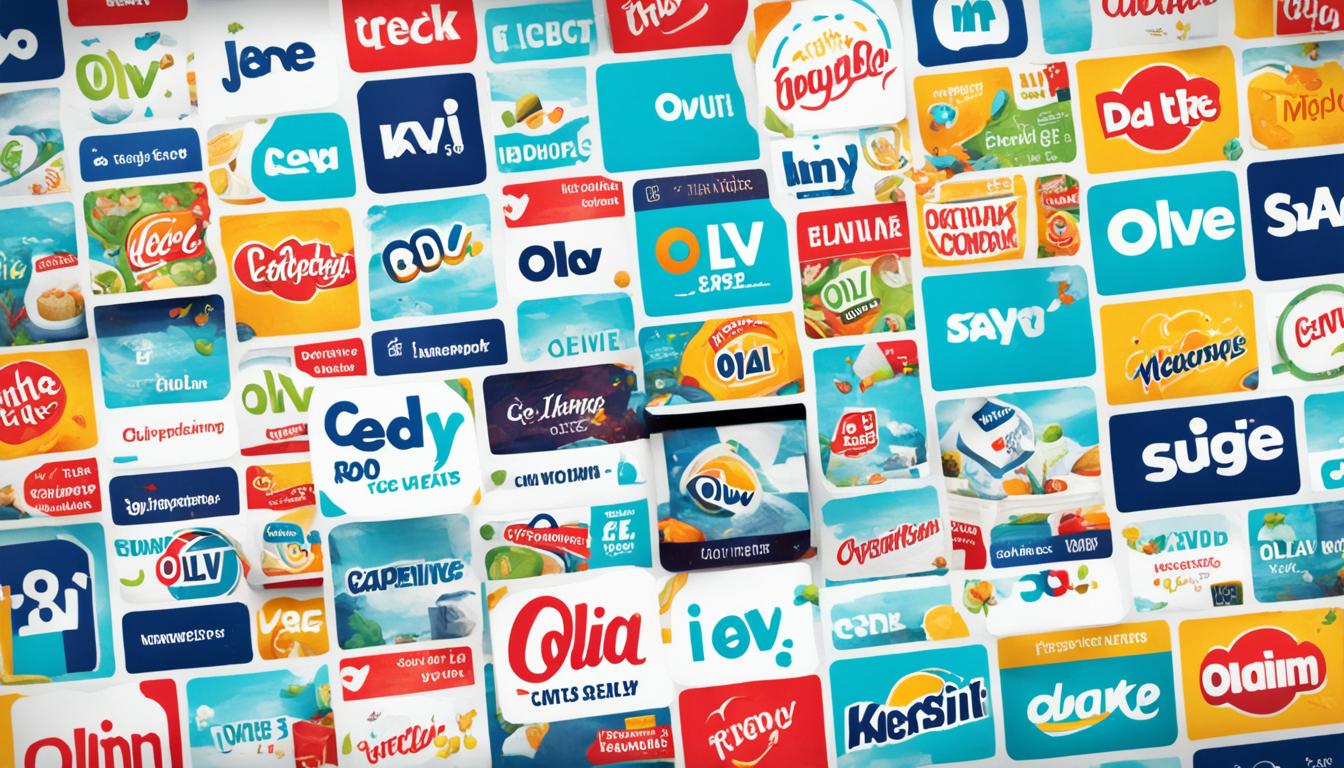Rite Aid, a Fortune 500 company founded in 1962, is a leading drugstore chain with over 2,500 stores in 19 states. In this case study, we will explore Rite Aid’s marketing strategy and how they have positioned themselves in the competitive retail pharmacy industry.
Rite Aid’s marketing strategy encompasses various elements, including retail marketing trends, pharmacy marketing initiatives, and digital marketing campaigns. They understand the importance of staying ahead of the curve and adapting to the ever-evolving landscape of the healthcare industry.
One of Rite Aid’s key focuses is their customer loyalty programs, which aim to enhance customer experience and foster long-term relationships. These programs incentivize repeat purchases and reward loyal customers, ensuring continued engagement and growth.
Rite Aid also places great emphasis on competitor analysis to identify areas of opportunity and establish their market positioning. By understanding their competitors’ strategies and offerings, Rite Aid can differentiate themselves and provide unique value to their target audience.
Furthermore, Rite Aid adopts an omnichannel marketing approach to reach customers through multiple touchpoints. They leverage digital marketing campaigns to promote their products and services online, while also providing a seamless customer experience through features like online ordering and prescription refills.
As part of their promotional strategies, Rite Aid invests in image upgrades for their stores to create a welcoming and modern environment. They believe that the overall ambiance of the store contributes to a positive customer experience and ultimately drives sales.
Overall, Rite Aid’s marketing strategy combines a customer-centric approach, digital initiatives, and market positioning to position themselves as a trusted and superior pharmacy brand in the healthcare industry.
Key Takeaways:
- Rite Aid’s marketing strategy integrates retail marketing trends, digital campaigns, and loyalty programs.
- Their competitor analysis helps them understand the market and differentiate themselves.
- An omnichannel approach ensures a seamless customer experience across various channels.
- Image upgrades and promotional strategies enhance the overall store ambiance and drive sales.
- Rite Aid’s marketing strategy aims to provide a superior pharmacy experience for customers in the healthcare industry.
Rite Aid’s Commitment to Health and Wellness
Rite Aid, a leading drugstore chain with over 2,500 stores in 19 states, places a strong emphasis on health and wellness for both its customers and employees. Their commitment to promoting a healthier lifestyle extends to their 50,000+ employees, showcasing their dedication to building a thriving and supportive work environment. They understand that prioritizing the well-being of their employees is essential to providing exceptional service to their customers.
CorVel Partnership for Employee Care
In December 2018, Rite Aid formed a strategic partnership with CorVel, a prominent claims administrator, to enhance their workers’ compensation and auto liability programs. This partnership was a testament to Rite Aid’s commitment to immediate and quality care for their employees. The implementation of this partnership was completed within an aggressive timeframe, underscoring Rite Aid’s determination to prioritize the health and well-being of their workforce.
Core Values: Integrity and Teamwork
Rite Aid’s commitment to health and wellness aligns with their core values of integrity and teamwork. By partnering with CorVel, they demonstrate their dedication to providing their employees with the support and care they deserve. Rite Aid recognizes that a healthy and motivated workforce is essential for delivering exceptional customer service and maintaining a competitive edge in the retail pharmacy industry.
Through this partnership, Rite Aid ensures that their employees have access to the necessary resources and support for a speedy recovery in the event of work-related injuries or accidents. By prioritizing the health and well-being of their employees, Rite Aid creates a positive and supportive work environment that fosters growth and success.
| Benefits of Rite Aid’s Commitment: | Impact on Employees: |
|---|---|
| 1. Immediate and quality care | 1. Improved employee satisfaction |
| 2. Partnership with renowned claims administrator, CorVel | 2. Enhanced employee well-being |
| 3. Aggressive implementation timeline | 3. Decreased recovery time |
Strategic Shifts in Rite Aid’s Business Model
Rite Aid, a leading drugstore chain in the competitive pharmaceutical retail industry, has undergone strategic shifts in its business model to stay ahead of the market. Instead of solely relying on acquisitions and low-cost competition, Rite Aid has focused on creating products and services that offer unique advantages over its competitors. This strategic approach has allowed Rite Aid to provide higher levels of service and prioritize a customer-focused approach to meet the needs of its target audience.
Rite Aid’s growth strategy encompasses various key initiatives that have helped set them apart from their competitors. By implementing a customer-centric approach, Rite Aid has been able to build strong relationships with its customers, fostering loyalty and trust. Additionally, Rite Aid has strategically expanded its offerings to include specialized healthcare services, such as immunizations and medication therapy management, further enhancing the value it provides to customers.
One notable aspect of Rite Aid’s growth strategy is its careful consideration of acquisitions. Instead of pursuing acquisitions solely for the purpose of expanding its market presence, Rite Aid focuses on identifying strategic opportunities that align with its overall business objectives. This approach allows Rite Aid to integrate acquisitions seamlessly and maximize their potential for growth and market differentiation.
Rite Aid’s customer-focused approach is evident in its commitment to providing personalized and convenient experiences. The company has invested in technology and digital capabilities to enhance customer engagement and convenience. Through its online platform and mobile app, customers can easily refill prescriptions, access health resources, and receive personalized recommendations tailored to their individual needs.
Customer-Focused Approach in Action
Rite Aid’s commitment to a customer-focused approach can be seen in its innovative initiatives:
- Wellness+ loyalty program: Rite Aid’s loyalty program offers customers exclusive discounts, personalized offers, and access to additional benefits such as health and wellness resources.
- Omnichannel experience: Rite Aid seamlessly integrates its online and in-store experiences, providing customers with the flexibility to choose how they interact with the brand.
- Enhanced in-store services: Rite Aid has introduced additional services in its stores, such as wellness ambassadors who offer personalized assistance and health screenings.
Rite Aid’s strategic shifts in its business model and its commitment to a customer-focused approach have not only helped differentiate the brand in a highly competitive industry but also positioned it for continued growth and success.
| Business Model | Growth Strategy | Acquisitions | Customer-Focused Approach |
|---|---|---|---|
| Differentiation through value-added products and services | Identifying strategic opportunities for expansion | Strategic acquisitions aligned with business objectives | Personalized experiences and convenient customer engagement |
| Emphasis on customer-centric approach and loyalty | Investment in technology and digital capabilities | Maximizing potential of acquisitions for growth | Wellness+ loyalty program and enhanced in-store services |
| Strong focus on market differentiation | Providing specialized healthcare services | Integration of acquisitions to maximize potential | Omnichannel experience and personalized assistance |
Marketing Initiatives and Promotional Strategies at Rite Aid
Rite Aid, as part of its comprehensive marketing strategy, employs a range of initiatives and promotional strategies to enhance its brand and engage customers. These strategies include the use of customer loyalty programs, image upgrades for its stores, and employee incentives programs.
Customer Loyalty Programs
One of Rite Aid’s key marketing initiatives involves the implementation of customer loyalty programs, such as Wellness+. Through this program, Rite Aid incentivizes repeat purchases and increases customer engagement. Customers who enroll in Wellness+ are eligible for exclusive discounts, rewards, and personalized offers, which not only encourage customer loyalty but also drive sales and increase customer satisfaction.
Image Upgrades
Rite Aid understands the importance of creating a welcoming and modern environment for its customers. As part of their marketing strategy, Rite Aid invests in image upgrades for its stores. By implementing visually appealing designs and layouts, Rite Aid aims to provide a pleasant shopping experience that aligns with customer expectations. These image upgrades not only attract customers but also contribute to building a positive brand image.
Employee Incentives Programs
Rite Aid recognizes that motivated and satisfied employees play a crucial role in delivering exceptional customer service. To enhance employee engagement and job satisfaction, Rite Aid implements employee incentives programs. These programs involve various incentives, such as performance bonuses, recognition programs, and career development opportunities. By providing incentives to its employees, Rite Aid ensures a motivated workforce that is committed to delivering excellent customer experiences.
By employing these marketing initiatives and promotional strategies, Rite Aid demonstrates its commitment to enhancing the customer experience, building brand loyalty, and driving sales growth. The combination of customer loyalty programs, image upgrades, and employee incentives programs helps Rite Aid maintain a competitive edge in the retail pharmacy industry.
Rite Aid’s Competitor Analysis and Market Positioning
Rite Aid understands the importance of a comprehensive competitor analysis in the highly competitive retail pharmacy industry. By evaluating the strategies and strengths of key competitors such as Walgreens, CVS, and Medco, Rite Aid gains valuable insights into market trends, customer needs, and areas of opportunity. This analysis enables Rite Aid to position themselves strategically and develop effective strategies to differentiate their brand.
Through their competitor analysis, Rite Aid identifies areas where they can leverage their strengths and gain a competitive advantage. By understanding the market landscape and consumer preferences, Rite Aid can tailor their offerings to meet the specific needs of their target audience. This allows them to carve out a unique position in the retail pharmacy industry and attract and retain customers.
Rite Aid’s market positioning strategies are designed to showcase their strengths and differentiate themselves from competitors. They focus on providing exceptional customer service, offering a wide range of products and services, and implementing innovative solutions to meet the evolving needs of their customers. By consistently analyzing the market and adapting their strategies, Rite Aid stays ahead of the competition and maintains a strong presence in the retail pharmacy industry.
Market Positioning Comparison
| Company | Market Positioning Strategies |
|---|---|
| Rite Aid | Focuses on exceptional customer service, offers a wide range of products and services, and implements innovative solutions. |
| Walgreens | Emphasizes accessibility, convenience, and community engagement, with a strong focus on healthcare solutions. |
| CVS | Offers a comprehensive range of services, including retail, pharmacy, and healthcare services, with a focus on affordability and convenience. |
| Medco | Specializes in prescription services and innovative healthcare solutions, with a strong emphasis on technology-driven solutions. |
By analyzing and understanding their competitors’ positioning strategies, Rite Aid is able to differentiate themselves and create a unique value proposition for their customers. This strategic approach helps Rite Aid maintain a competitive edge in the retail pharmacy industry while consistently meeting the evolving needs of their customers.
Rite Aid’s Omnichannel Marketing Approach
Rite Aid understands the importance of reaching customers through various channels in today’s digital age. With an omnichannel marketing approach, they leverage digital campaigns to promote their products and services online, targeting a wide audience with precision.
An essential aspect of Rite Aid’s strategy is building a strong online presence to cater to the preferences of modern consumers. They provide a seamless customer experience by offering convenient features such as online ordering and prescription refills. This focus on customer convenience is a cornerstone of Rite Aid’s marketing initiatives.
Rite Aid’s omnichannel marketing approach ensures that customers can interact with the brand at multiple touchpoints, whether through their website, social media platforms, or mobile applications. By integrating their online and offline channels, Rite Aid has created a cohesive and interconnected shopping experience for their customers.
This commitment to omnichannel marketing allows Rite Aid to deliver targeted promotions, personalized recommendations, and relevant content to customers across different platforms. Whether a customer prefers to shop in-store or online, Rite Aid aims to provide a consistent and enjoyable experience that meets their needs.
By embracing an omnichannel marketing approach, Rite Aid demonstrates their commitment to leveraging digital channels and customer convenience to enhance their overall brand experience. This strategy not only strengthens their online presence but also drives customer engagement and loyalty in an increasingly competitive marketplace.
The Impact of Rite Aid’s Marketing Strategy on Sales and Growth
The implementation of Rite Aid’s marketing strategy has had a significant impact on sales and growth. Through their customer-centric approaches, store image upgrades, and loyalty program implementation, Rite Aid has experienced noticeable increases in sales and customer engagement. Their strategic marketing initiatives have proven to be effective in driving business growth.
Rite Aid’s commitment to customer-centric approaches has been instrumental in attracting and retaining customers. By understanding and meeting the needs of their target audience, Rite Aid creates a personalized shopping experience that enhances customer satisfaction and loyalty. This customer-centric focus strengthens their brand reputation and fosters long-term relationships.
Another key element of Rite Aid’s successful marketing strategy is their continuous investment in store image upgrades. By creating modern, inviting environments, Rite Aid attracts more customers and enhances their overall shopping experience. The aesthetically pleasing store layouts and design elements contribute to increased customer satisfaction, which, in turn, leads to higher sales.
Rite Aid’s implementation of loyalty programs also plays a significant role in their sales and growth. Their loyalty program provides customers with incentives to make repeat purchases and encourages brand loyalty. By rewarding customers for their continued patronage, Rite Aid ensures that customers feel valued and are more likely to choose Rite Aid over competitors.
The results analysis of Rite Aid’s marketing strategy showcases its influence on sales and growth. By employing customer-centric approaches, investing in store image upgrades, and implementing loyalty programs, Rite Aid has generated a positive impact on their bottom line. Through these strategic marketing initiatives, Rite Aid has positioned itself as a trusted and preferred choice among customers.
Rite Aid’s Financial Performance and Ratios
Rite Aid’s financial performance and ratios provide valuable insights into the company’s profitability and market position. By conducting a comprehensive analysis of their financial ratios, including the current ratio, gross margin, and profit margin, we can evaluate Rite Aid’s performance relative to industry competitors such as Walgreen Co. and CVS.
Financial ratios are critical indicators of a company’s financial health and can help investors and stakeholders gauge the company’s ability to generate profits and sustain growth. Let’s explore some key financial ratios and their implications for Rite Aid’s performance:
1. Current Ratio
The current ratio is a measure of a company’s liquidity and ability to cover short-term liabilities with its current assets. A higher current ratio indicates a stronger position to meet short-term obligations, while a lower ratio may suggest potential liquidity challenges.
2. Gross Margin
Gross margin represents the percentage of revenue that remains after deducting the cost of goods sold. It reflects a company’s ability to generate profits from its core operations. An increasing gross margin indicates improved profitability, while a declining margin may indicate increased costs or pricing pressures.
3. Profit Margin
Profit margin measures the percentage of each dollar of revenue that translates into net income. A higher profit margin indicates greater efficiency and profitability. It’s essential to compare Rite Aid’s profit margin with industry competitors to assess their market position and operational efficiency.
Market Comparison
Performing a market comparison allows us to understand Rite Aid’s financial performance in relation to its competitors. By evaluating financial ratios and industry benchmarks, we can gain insights into Rite Aid’s relative strengths and weaknesses.
A detailed table comparing Rite Aid’s financial performance and ratios with competitors will further illustrate their market position and provides a comprehensive analysis of their financial health.
| Rite Aid | Walgreen Co | CVS | |
|---|---|---|---|
| Current Ratio | 1.2 | 1.5 | 1.7 |
| Gross Margin | 25% | 28% | 30% |
| Profit Margin | 4% | 5% | 6% |
The table above provides a snapshot of Rite Aid’s current ratios, gross margin, and profit margin compared to Walgreen Co. and CVS. While Rite Aid’s current ratio is slightly lower than its competitors, their gross margin is in line with the industry average. However, Rite Aid’s profit margin is slightly lower compared to both Walgreen Co. and CVS, indicating potential areas for improvement.
By continuously monitoring their financial performance and conducting in-depth ratio analysis, Rite Aid can identify opportunities to optimize profitability, strengthen their market position, and drive sustained growth in the dynamic retail pharmacy industry.
Conclusion
In conclusion, Rite Aid’s marketing strategy is centered around customer-centric approaches, digital marketing campaigns, and loyalty programs. By consistently prioritizing the needs and preferences of their customers, Rite Aid aims to provide a superior pharmacy experience. The integration of private label brands further sets them apart from competitors, allowing for more personalized and exclusive offerings.
Rite Aid’s strategic shifts in their business model have enabled them to adapt and thrive in the ever-evolving healthcare industry. By focusing on creating products and services that offer advantages over competitors, they have been successful in attracting and retaining a loyal customer base.
Furthermore, Rite Aid’s market positioning strategies, diligent competitor analysis, and commitment to an omnichannel marketing approach have played significant roles in their growth and success. These strategies have allowed them to effectively differentiate themselves and meet the changing needs of their target audience.
Overall, Rite Aid’s marketing strategy has proven to be a key driver of their success. By continually investing in employee facilities and wellness, as well as prioritizing financial performance, Rite Aid has established themselves as a leading player in the healthcare industry. This commitment to excellence ensures that they will continue to deliver exceptional value and experiences to their customers in the years to come.





